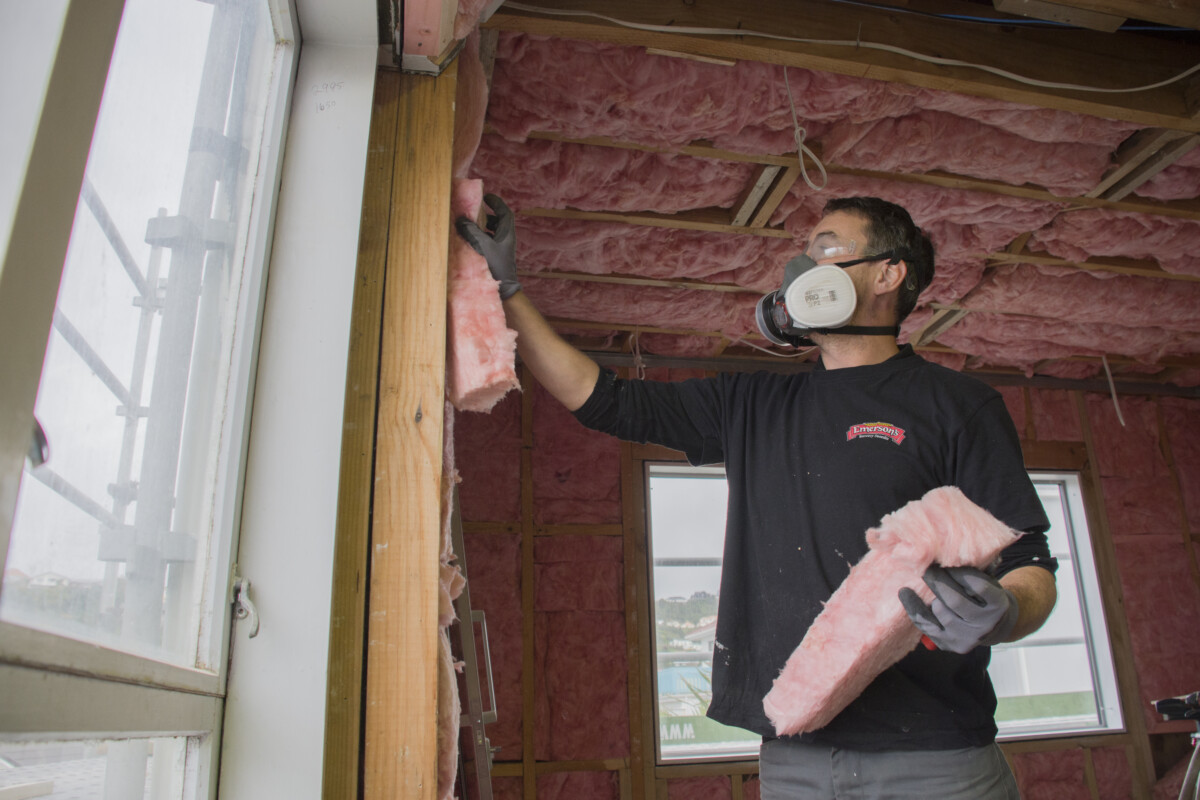Updated energy efficiency requirements
25 Jan 2022, Industry Updates, News, Sustainability Focus

New Building Code requirements bring biggest energy efficiency changes in over a decade – an important update that all builders need to be aware of
On 29 November 2021, the Ministry of Business, Innovation and Employment (MBIE) released the biggest energy efficiency updates to the acceptable solutions and verification methods in more than a decade.
“The latest changes will come in from 3 November 2022 and will make new homes and buildings warmer, drier and healthier, with less impact on the climate,” said Jenni Tipler, Manager of Building Performance and Engineering at MBIE.
H1/AS1 Acceptable Solution changes include increases to roof, window, wall and underfloor insulation requirements and introduce six new climate zones to reflect the specific weather experienced in different parts of New Zealand.
The new requirements aim to reduce energy to heat and cool large buildings by 23% and to heat homes by up to 40%.
Changes have also been made to introduce a verification method for the energy efficiency of HVAC systems.
“These are the biggest energy efficiency changes to the Building Code in over a decade and will support the building and construction sector to help New Zealand reach its goal of net zero carbon emissions by 2050,” Tipler said.
Six Zones, six standards
Changes in insulation requirements will affect residential and small buildings, as well as large buildings.
In recognition of New Zealand’s very different climates, the six new climate zones mean buildings will need to be constructed to different insulation levels to reflect this.
In residential and small buildings, MBIE is proceeding with changes to the schedule method for roof, window, wall and underfloor insulation requirements, which aim to reduce the energy needed for heating residential homes by approximately 40% over previous minimum requirements.
Double top
“One of the simplest and most cost-effective ways to boost thermal performance is to increase roof insulation,” said Tipler. “That’s why we’ve decided to double the minimum amount of roof insulation required for new builds across the country.”
Under the schedule method, the minimum is now R6.6 for the roof in all climate zones. However, there is an allowance for less insulation around the perimeter in ceilings where space restrictions don’t allow the full R6.6 thickness of insulation to be installed.
Window watch
Minimum insulation levels for windows, which represent the largest source of heat loss, are also being increased, with a window and door minimum of R0.46 in the four warmest climate zones and R0.50 in the two coldest. Skylight requirements are higher in the four colder zones.
“We have prioritised the first window insulation upgrades in the coldest parts of the country, with climate zones 5 & 6 (colder zones) needing to meet the full new requirements from 3 November 2022,” said an MBIE spokesperson.
The window and door minimum of R0.46 is achieved in two steps in new climate zones 1 and 2. Between 3 November 2022 and 2 November 2023, the minimum construction R-value is R0.37. After 2 November 2023, it rises to R0.46.
“This will allow manufacturers enough time to scale up production to the higher-performing window requirements,” said Tipler. “Climate zones 1 and 2 represent approximately 60% of residential construction activity in New Zealand, so MBIE targeted the colder climates first to provide the quickest improvement for the available supply.”
Wall insulation for houses has been set at construction R-value R2.0 for all climate zones. This can be achieved using 90mm framing. Floor insulation for slab-on-ground has been slightly increased and builders are likely to see slab edge insulation being specified to comply with the new R-values. Suspended floors will need to meet R-values ranging from R2.5 to R3.0, which is a big increase from the current R1.3.
According to MBIE, the level of increase across the different building elements varies but is still achievable for current insulation products and construction methods in New Zealand.
Bigger and bolder
Compared to residential buildings, MBIE was bolder with changes to the insulation requirements for large buildings. The changes in insulation requirements for large buildings are the greatest achievable, while still using current design and construction practices in New Zealand, and aim to reduce the energy needed for heating and cooling of 23% on average across new large buildings over previous minimum status quo requirements.
The update to the Building Code is being made following a consultation that received more submissions than the past five years of updates combined, suggesting a high level of public interest in improving energy efficiency.
To allow the sector to prepare for the changes before they become mandatory for new builds there will be a one-year transition period for the majority, and a two-step approach for the window insulation requirements. In practice, this means most building consents lodged after 3 November 2022 will need to reflect the changes.
Mixed reaction
Shore Build Limited Director & Project Manager Ash Hare is pleased with the changes: “I think it’s a good idea. Anything that’ll make homes more efficient and reduce the cost required to heat and cool homes is going to be a good thing.”
Bryce Dunlop from Dunlop Building agreed, saying the extra cost involved in better insulating houses would prove to be an excellent return on investment.
“New Zealand houses underperform compared to countries around the world, because there’s not enough insulation in them and not enough care and planning goes into insulating them. A house is the biggest investment that you make, and the return on investment is of far greater value than the money you save by not insulating to a higher standard.
“For the lifespan of a building, it’s a very small cost to pay. The update is a change that needs to happen, and it’s a fantastic thing for the industry in New Zealand. We’ll all be better for it, especially on the South Island where the houses are too cold and too damp.”
However some organisations, such as Window & Glass Association NZ, are concerned that the timeframes are tight, despite MBIE’s assurances to the contrary. CEO Brett Francis said the Association supported the improvements to energy efficiency, and provided feedback during the consultation.
“We appreciate MBIE listened to our feedback and removed product types and focused on performance levels,” said Francis. “We also appreciated the opportunity to update the outdated schedule tables.
“We welcome a sense of a roadmap, but these changes feel more like a race track as most of our industry orders machinery, retools, and retrains to deliver new products. We will continue to work with MBIE and the Government as we get a clearer sense of our ability to pivot (yes, this is one time when that word is appropriate) in time.
“We’re also very interested in the work now being undertaken by MBIE – regarding wall construction, where we are expecting significant change – and its impact on window installation. We’re concerned that MBIE have yet to consider airtightness, ventilation, internal moisture, or solar heat gain – but this is all to be consulted on at a future date.”
Others are concerned the new regulations will increase costs at a time when many are unable to afford healthy housing.
“When you increase the requirements on building, the only person who pays is the end user, whether that be the homeowner or the tenant,” Williams Corporation managing director Matthew Horncastle told Stuff.
“I just think we need to be focusing on affordability.
“Every time the Government or council gets involved, everything they do is making it more expensive. I’m not seeing anyone do anything that makes it more affordable, and I just find it concerning.”
More changes ahead
MBIE reminds builders that they will continue to need to stay abreast of the Code, which will be updated further in the future.
“Planning and development of future updates is already underway,” said Tipley, “and we will continue to make changes that support higher density housing and the Building for Climate Change programme.”
For more information on the updates to the Building Code, search ‘Building Code Update’ on building.govt.nz
Register to earn LBP Points Sign in



